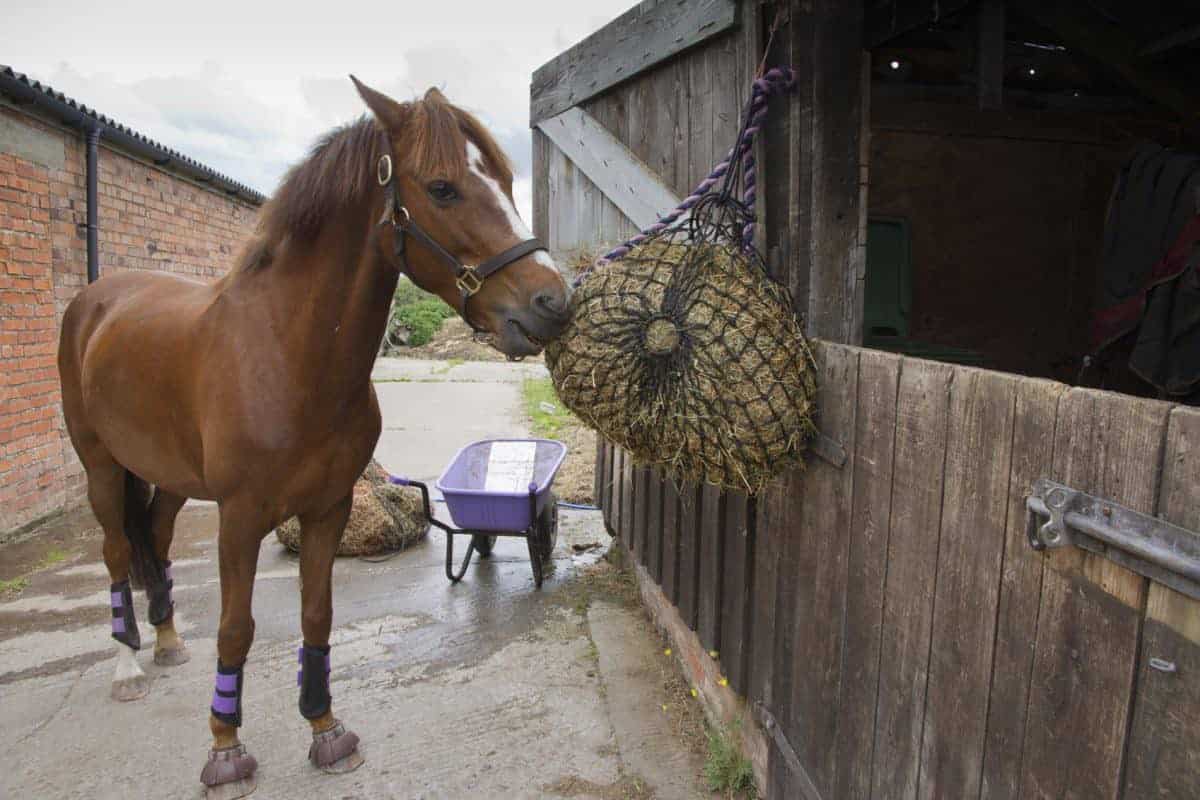Research reveals steaming hay can reduce respiratory problems by 63%

With the colder, wetter weather chances are your horse is spending more time indoors, which can lead to an increase in coughs and runny noses.
But did you know that horses with fungi in their airwaves are nearly four times more likely to be diagnosed with Inflammatory Airway Disease (IAD)? According to research this could be prevented by steaming your hay with Haygain…
Reduce the risk
A study conducted in 2013 and 2014 by Dr Julie Dauvillier and Dr Emmanuelle van Erck-Westergren examined 482 horses, which had been referred for a regular health check, poor performance or respiratory issues. All horses were scoped and their case history and results recorded.
The study found that 72% of the horses had some type of fungi in their airways. They also discovered that this made them 3.8 times more susceptible to IAD.
Sources of fungi
The sources of these fungi were the bedding and forage. After analysing all the forage options (dry hay, soaked hay, haylage or Haygain steamed hay), steamed hay not only had the lowest risk, but was the ONLY method which significantly decreased the risk of finding fungi in the airways.
The bar chart below shows how straw bedding and dry hay increase the risk of diagnosing fungi in the airways.

Aiding digestion
This research shows that feeding horses steamed hay alone could reduce the incidence of IAD by 63%. This was found to be true even if hay-steaming was the only environmental management change made in the horse’s care regime.
International showjumper Jessica Mendoza is a big proponent of steaming hay.
“We steam our hay using a high temperature steamer and also feed horses from ground level, which is the healthiest way and makes it last longer, aiding the horse’s digestion and helping to alleviate the boredom of standing in,” she says.
Evidence of inflammation
According to Dr. Van Erck-Westerge,n IAD is significantly more prevalent than is often assumed. This is partly due to the lack of obvious symptoms associated with IAD in many horses.
There are several other research papers that support this. Gerber et al (2003) looked at airway inflammation and mucus in two age groups of asymptomatic, well-performing sport horses and found that although clinically healthy, all of the horses which were stabled showed evidence of inflammation in their airways.
Allen et al (2006) found lower airway inflammation in 70% of National Hunt horses referred for poor performance, while Nolen-Walston found that 81% of the 98 cases they looked at retrospectively had evidence of airway inflammation.






